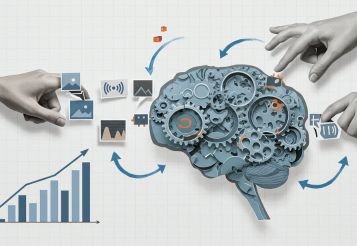In today's financial environment, credit risk assessment is the foundation of strategic decisions in banks. Technological advances and data integration have made credit risk assessment in banks more accurate and predictive. Keep reading to find out how Mosaic and Insights Hub can help in this process, offering comprehensive diagnostics, risk mitigation, and smart operations!
Neste conteúdo você vai ler (Clique no conteúdo para seguir)
- How important is credit risk assessment in banks?
- How does the bank credit risk assessment process work?
- Key metrics for risk assessment
- Innovate your credit decision with Mosaic and Insights Hub
- Fraud management and prevention in credit analysis
- Best practices for banks in the strategic use of data
- How to boost marketing and digital performance with credit intelligence
- Discover our solutions to enhance your credit analysis!
How important is credit risk assessment in banks?
The stability of the financial system depends on banks' ability to identify and mitigate banking risk. A structured credit risk assessment reduces default and ensures sustainable operations, even in adverse scenarios.
Robust processes build solid portfolios and customized products, strengthening the confidence of investors, customers, and regulators. Behavioral and statistical data allow you to map trends and quickly adjust credit policies.
Our solutions, such as Mosaic and Insights Hub, segment customers, monitor indicators in real time, and integrate layers of protection and automation. For example, banks that automate credit analysis can significantly reduce response time without losing rigor.
How does the bank credit risk assessment process work?
Credit risk assessment in banks begins with the collection of registration data, proof of income, and financial history from multiple sources. After collection, a document analysis is performed to validate authenticity and currency. Statistical models and artificial intelligence process variables such as frequency of delays, transaction volume, and payment capacity.
Thus, the credit cycle, which comprises origination, monitoring, and renewal, is guided by dynamic data. Finally, the final decision is validated by specialized teams, raising the standard of governance and customer service.
Key metrics for risk assessment
Quantitative analysis is central to credit risk assessment. Learn about them below:
|
Credit Score |
Summarizes the customer's financial history, facilitating segmentation and limit setting |
|
Probability of Default (PD) |
Estimates the chance of default |
|
Loss Given Default (LGD) |
Calculates the potential loss by discounting recoverable amounts |
|
Exposure at Default (EAD) |
Indicates the amount exposed to risk in the event of non-payment |
The integration of these metrics enables financial simulations and policy adjustments. Mosaic and Insights Hub increase efficiency by cross-referencing behavioral and socioeconomic variables, enabling rapid adjustments to limits and rates as behavior changes.
Innovate your credit decision with Mosaic and Insights Hub
Mosaic segments individuals and companies into detailed clusters companies, considering income, consumption habits, and location. Insights Hub delivers real-time behavioral and predictive data, automating stages of the credit cycle and enhancing personalization.
Banks that integrate Mosaic and Insights Hub monitor risk indicators, tailor offers, and protect data with advanced technology. This automation frees up teams for strategic action while maintaining security and compliance. The efficient use of these resources enables rapid responses to market variations and greater preciseness in credit decisions.
Fraud management and prevention in credit analysis
Fraud management is a strategic pillar during credit analysis for banks. Advanced systems are essential for detecting inconsistencies and issuing automatic alerts in case of suspicion. In recent years, digital banking fraud has increased significantly, requiring more sophisticated solutions to prevent financial risks.
Here, for example, we offer analytical tools that integrate prevention and compliance, ensuring that only legitimate proposals move forward. Biometric validation, artificial intelligence, and continuous monitoring, for example, reinforce security and promote a much more reliable credit journey.
Best practices for banks in the strategic use of data
Digital transformation in the banking sector depends on the strategic use of data to strengthen analysis, reduce risks, and improve decisions. Big Data, analytics, and machine learning expand the ability to predict behavior and identify opportunities, especially when combined with external sources such as public data and digital interactions.
To sustain this progress, it is important to adopt robust data governance, with standardization of information, security controls, and adherence to local data protection laws. Continuous updating of models and preparation of teams ensure efficiency in the face of market changes.
The advisory support we offer complements this process with updated databases, structured methodologies, and data intelligence, keeping banks more competitive and agile in the digital environment.
How to boost marketing and digital performance with credit intelligence
Credit intelligence drives targeted marketing, enabling precise campaign segmentation. Instead of broad, poorly targeted campaigns, banks can identify profiles with a higher propensity to consume, tailor offers to each customer's financial situation, and communicate relevant benefits at different stages of the journey.
Predictive data solutions and platforms such as Insights Hub enable this personalization by combining financial behavior, risk analysis, and consumption potential metrics. In addition, the integration between credit intelligence and CRM strengthens relationship initiatives, as it allows tracking changes in customer profiles and updating offers according to their evolution.
In paid media campaigns, this data optimizes investments by targeting ads only to audiences with greater affinity, reducing dispersion, increasing ROI, and improving cost per acquisition. Continuous analysis of scores, digital behavior, and signs of intent enables real-time adjustments, making actions more efficient.
To top it off, the combination of marketing and credit analysis expands banking operations by offering appropriate products, reducing commercial risk, and increasing customer satisfaction. When the bank uses data intelligence in an integrated way, each channel begins to deliver value consistently, reinforcing the institution's trust and relevance in the digital environment.
Discover our solutions to enhance your credit analysis!
We offer a robust portfolio of Marketing Services, Mosaic, and Insights Hub to support banks in their digital transformation. Our consultative approach and cutting-edge technology ensure accurate diagnostics, risk mitigation, and continuous strategy evolution.
Contact our experts and enhance your marketing, CRM, and financial operations with data intelligence. Check out our solutions and discover how data intelligence can elevate your approach to banking risk, improve customer churn prediction, and drive targeted marketing in an innovative and secure way.







